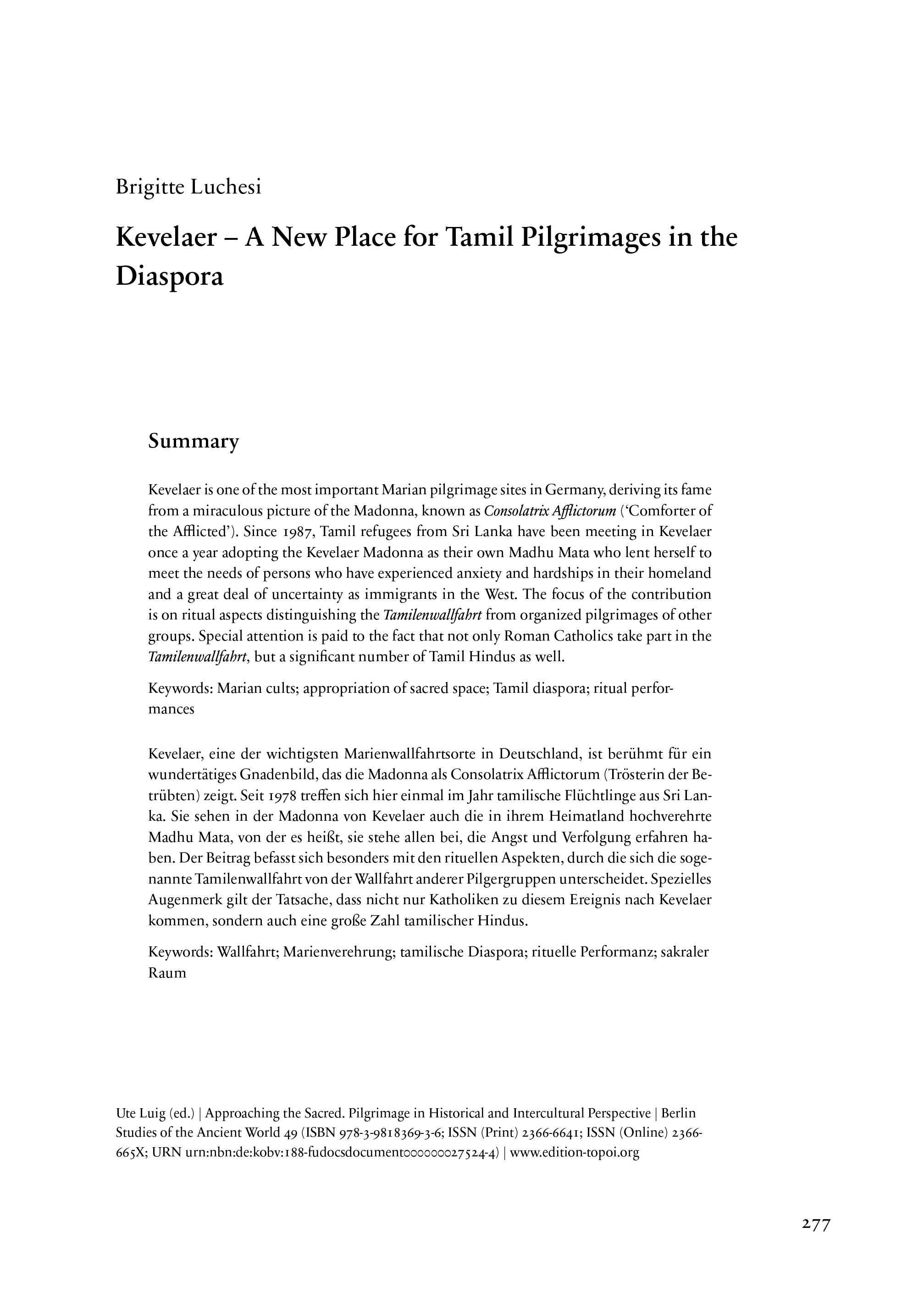Kevelaer – A New Place for Tamil Pilgrimages in the Diaspora
Kevelaer is one of the most important Marian pilgrimage sites in Germany, deriving its fame from a miraculous picture of the Madonna, known as Consolatrix Afflictorum (‘Comforter of the Afflicted’). Since 1987, Tamil refugees from Sri Lanka have been meeting in Kevelaer once a year adopting the Kevelaer Madonna as their own Madhu Mata who lent herself to meet the needs of persons who have experienced anxiety and hardships in their homeland and a great deal of uncertainty as immigrants in the West. The focus of the contribution is on ritual aspects distinguishing the Tamilenwallfahrt from organized pilgrimages of other groups. Special attention is paid to the fact that not only Roman Catholics take part in the Tamilenwallfahrt, but a significant number of Tamil Hindus as well.
Kevelaer, eine der wichtigsten Marienwallfahrtsorte in Deutschland, ist berühmt für ein wundertätiges Gnadenbild, das die Madonna als Consolatrix Afflictorum (Trösterin der Betrübten)zeigt. Seit 1978 treffen sich hier einmal im Jahr tamilische Flüchtlinge aus Sri Lanka. Sie sehen in der Madonna von Kevelaer auch die in ihrem Heimatland hochverehrte Madhu Mata, von der es heißt, sie stehe allen bei, die Angst und Verfolgung erfahren haben. Der Beitrag befasst sich besonders mit den rituellen Aspekten, durch die sich die sogenannte Tamilenwallfahrt von der Wallfahrt anderer Pilgergruppen unterscheidet. Spezielles Augenmerk gilt der Tatsache, dass nicht nur Katholiken zu diesem Ereignis nach Kevelaer kommen, sondern auch eine große Zahl tamilischer Hindus.

